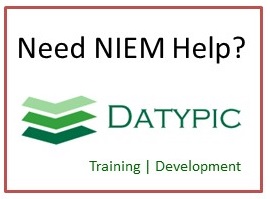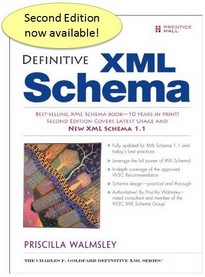gml:AbstractGeneralTransformation
gml:AbstractGeneralTransformation is an abstract operation on coordinates that usually includes a change of Datum. The parameters of a coordinate transformation are empirically derived from data containing the coordinates of a series of points in both coordinate reference systems. This computational process is usually "over-determined", allowing derivation of error (or accuracy) estimates for the transformation. Also, the stochastic nature of the parameters may result in multiple (different) versions of the same coordinate transformation. The operationVersion, sourceCRS, and targetCRS proeprty elements are mandatory in a coordinate transformation. This abstract complex type is expected to be extended for well-known operation methods with many Transformation instances, in Application Schemas that define operation-method-specialized value element names and contents. This transformation uses an operation method with associated parameter values. However, operation methods and parameter values are directly associated with concrete subtypes, not with this abstract type. All concrete types derived from this type shall extend this type to include a "usesMethod" element that references one "OperationMethod" element. Similarly, all concrete types derived from this type shall extend this type to include one or more elements each named "uses...Value" that each use the type of an element substitutable for the "AbstractGeneralParameterValue" element.
Element information
Namespace: http://www.opengis.net/gml/3.2
Schema document: external/ogc/gml/3.2.1/coordinateOperations.xsd
Type: gml:AbstractGeneralTransformationType
Properties: Global, Qualified, Abstract
Content
- Sequence [1..1]
- gml:metaDataProperty [0..*]
- gml:description [0..1]The value of this property is a text description of the object. gml:description uses gml:StringOrRefType as its content model, so it may contain a simple text string content, or carry a reference to an external description. The use of gml:description to reference an external description has been deprecated and replaced by the gml:descriptionReference property.
- gml:descriptionReference [0..1]The value of this property is a remote text description of the object. The xlink:href attribute of the gml:descriptionReference property references the external description.
- gml:identifier [1..1]Often, a special identifier is assigned to an object by the maintaining authority with the intention that it is used in references to the object For such cases, the codeSpace shall be provided. That identifier is usually unique either globally or within an application domain. gml:identifier is a pre-defined property for such identifiers.
- gml:name [0..*]The gml:name property provides a label or identifier for the object, commonly a descriptive name. An object may have several names, typically assigned by different authorities. gml:name uses the gml:CodeType content model. The authority for a name is indicated by the value of its (optional) codeSpace attribute. The name may or may not be unique, as determined by the rules of the organization responsible for the codeSpace. In common usage there will be one name per authority, so a processing application may select the name from its preferred codeSpace.
- gml:remarks [0..1]
- gml:domainOfValidity [0..1]The gml:domainOfValidity property implements an association role to an EX_Extent object as encoded in ISO/TS 19139, either referencing or containing the definition of that extent.
- gml:scope [1..*]The gml:scope property provides a description of the usage, or limitations of usage, for which this CRS-related object is valid. If unknown, enter "not known".
- gml:operationVersion [1..1]gml:operationVersion is the version of the coordinate transformation (i.e., instantiation due to the stochastic nature of the parameters). Mandatory when describing a transformation, and should not be supplied for a conversion.
- gml:coordinateOperationAccuracy [0..*]gml:coordinateOperationAccuracy is an association role to a DQ_PositionalAccuracy object as encoded in ISO/TS 19139, either referencing or containing the definition of that positional accuracy. That object contains an estimate of the impact of this coordinate operation on point accuracy. That is, it gives position error estimates for the target coordinates of this coordinate operation, assuming no errors in the source coordinates.
- gml:sourceCRS [1..1]gml:sourceCRS is an association role to the source CRS (coordinate reference system) of this coordinate operation.
- gml:targetCRS [1..1]gml:targetCRS is an association role to the target CRS (coordinate reference system) of this coordinate operation.
Attributes
| Name | Occ | Type | Description | Notes |
|---|---|---|---|---|
| gml:id | [1..1] | xsd:ID | The attribute gml:id supports provision of a handle for the XML element representing a GML Object. Its use is mandatory for all GML objects. It is of XML type ID, so is constrained to be unique in the XML document within which it occurs. |
Used in
- Type gml:ArrayAssociationType (Element gml:members)
- Type gml:CoordinateOperationPropertyType (Elements gml:coordOperation, gml:coordinateOperationRef, gml:usesSingleOperation, gml:usesOperation)
- Type gml:DictionaryEntryType (Elements gml:definitionMember, gml:dictionaryEntry)
- Type gml:GeneralTransformationPropertyType (Element gml:generalTransformationRef)
- Type gml:OperationPropertyType (Element gml:operationRef)
- Type gml:SingleOperationPropertyType (Element gml:singleOperationRef)
- Type gmx:CT_Operation_PropertyType (Element gmx:operation)
Substitution hierarchy
- gml:AbstractObject
- can be substituted with gml:AbstractGML
- can be substituted with gml:Definition
- can be substituted with gml:AbstractCoordinateOperation
- can be substituted with gml:AbstractSingleOperation
- can be substituted with gml:AbstractOperation
- can be substituted with gml:AbstractGeneralTransformation
- can be substituted with gml:Transformation
- can be substituted with gmx:ML_Transformation
- can be substituted with gml:Transformation
- can be substituted with gml:AbstractGeneralTransformation
- can be substituted with gml:AbstractOperation
- can be substituted with gml:AbstractSingleOperation
- can be substituted with gml:AbstractCoordinateOperation
- can be substituted with gml:Definition
- can be substituted with gml:AbstractGML



